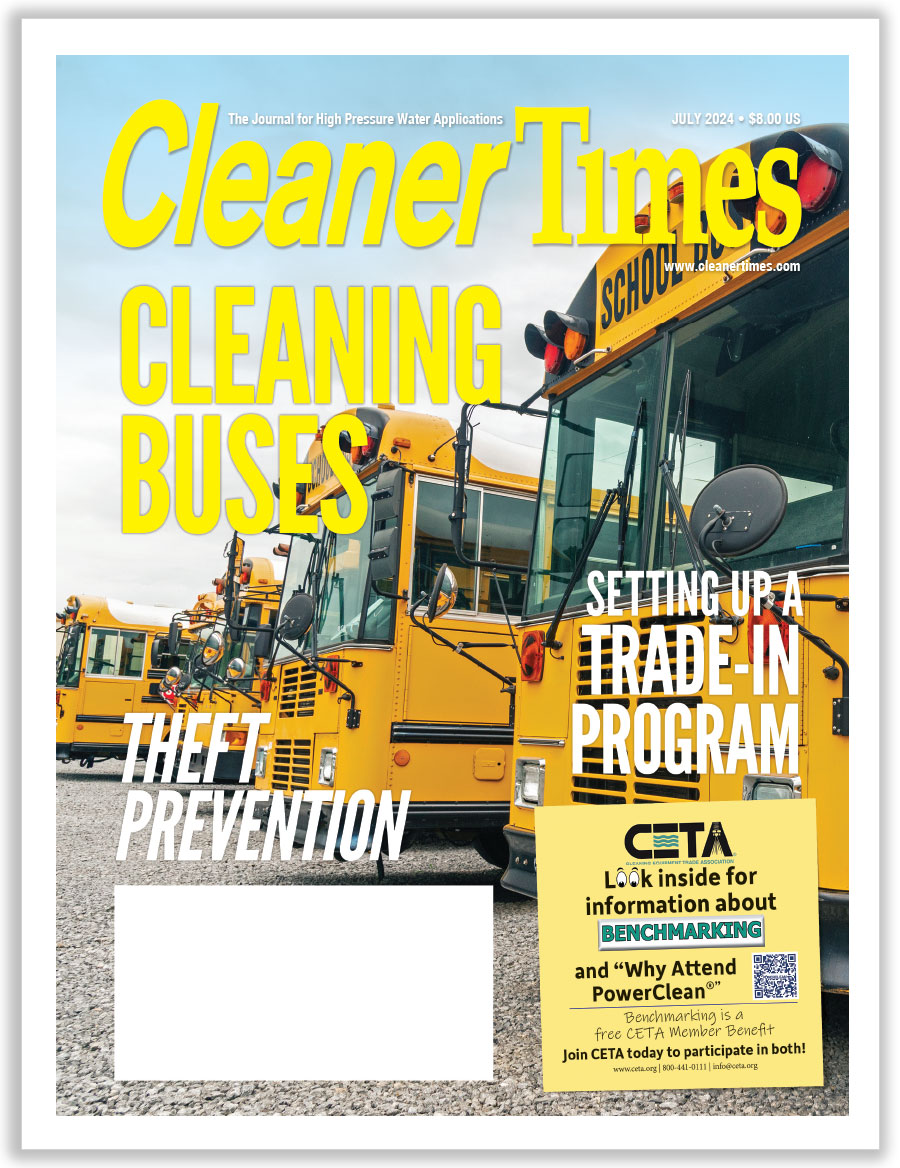
HSAs
Tax Savings and Inexpensive Worker Benefit
By Mark E. Battersby / Published December 2019

To remain competitive in today’s job market, almost half of U.S. employers provide health insurance. Still others, including many in the pressure washing industry, worry about shouldering the expense of offering health insurance. One option for small businesses—and their owners—that is increasing in popularity and affordability is Health Savings Accounts, or HSAs.
Since they were created in 2004, tax-advantaged HSAs have grown into a successful multi-faceted tool for employers as well as for small business owners seeking self-only healthcare plans. Used in combination with a high-deductible health plan (HDHP), HSAs have proven to be a free-market option that does not rely on mandates or cash subsidies.
Although the Affordable Care Act’s (ACA’s) individual mandate was eliminated beginning in 2019, the employer mandate remains in place requiring Applicable Large Employers (ALEs) to provide a certain percentage of their full-time-equivalent (FTE) employees with minimum essential coverage. ALEs are defined as any business employing a combination of 50 or more FTE employees.
Small pressure cleaning businesses that don’t fall within this definition aren’t subject to the employer mandate and, thus, are not required to offer health insurance coverage to their workers—but should they? After all, today 25 million American families and individuals save and spend their own money tax-free on a variety of healthcare expenses—more than double the number of individuals using the Obamacare exchange.
HSAs For Fun and Profit
The concept of HSAs is both simple and elegant. Give individuals generous tax breaks to put aside money to help pay for their health care. That, in turn, would make it easier for employers to offer these employees high-deductible health plans.
In theory, the combination of HSAs and high-deductible insurance would encourage patients to reduce their medical spending. That, in turn, would make it easier for employers to offer those employees high-deductible health plans. The high-deductible plan puts more of the burden on consumers, rather than insurance companies, to pay those first-dollar costs, eventually lowering the nation’s overall healthcare costs.
Much like an IRA, HSAs benefit from three tax breaks. Both contributions and investment income earned on the accounts are tax-free. Withdrawals are also tax-free as long as they are used for qualified health-related expenses.
After age 65, participants can choose to treat an HSA as a retirement account. If HSA funds are withdrawn for other than qualified medical expenses before the participant turns 65, income tax plus a 20 percent penalty is due. However, after the participant turns 65, that 20 percent penalty no longer applies, and withdrawals are treated as ordinary income.
Funds in an HSA can be used to pay deductibles and other qualified health care expenses (including dental, vision, or other health services not covered by insurance). Money remaining in the account can be invested just as with a 401(k) plan. Best of all, the tax-advantaged money in the HSA plan can grow, year after year, even if workers change jobs.
HSAs provide a good deal for participants—both workers and employers. And, best of all, HSAs provide an option for the self-employed or small business owner reluctant to offer—or unable to afford—healthcare coverage for other than himself.
Yes, There Are Limits
Participants in HSA plans can’t contribute more than they earned for the year from the employer sponsoring the HDHP. A self-employed individual can’t contribute more than her net self-employment income.
HSA participants, or “owners,” must have a health insurance policy with a deductible of at least $1,350 for single coverage or $2,700 for family coverage. Contributions of up to $3,500 are permitted during 2019. Those with family coverage can contribute up to $7,000. Planning ahead, in 2020, participants can contribute $3,550 for individual coverage, up from $3,500 in 2019, or $7,100 for family coverage, an increase of $100.
For those 55 years and older, the HSA “catch-up” contribution remains level at $1,000 because it wasn’t indexed for inflation. With a catch-up contribution, those with self-only coverage can contribute up to $4,500, while those with family coverage can contribute a maximum of $8,000.
Small Business Healthcare Tax Credit
An option that should not be ignored is the Small Business Health Care Tax Credit (SBHCTC) that is available to employers with fewer than 25 employees, that pay an average annual salary of less than $50,000 and that contribute a uniform percentage of at least 50 percent of the premium cost for employee health insurance coverage obtained through a Small Business Health Options Program (SHOP) Exchange. The maximum tax credit has been extended through 2019 and is generally 50 percent of employer-paid premiums. It can be taken for only two years, which must be consecutive.
Smaller pressure cleaning businesses with lower average salaries can qualify for a higher healthcare tax credit. For example, a contractor business em-
ploying fewer than 10 people and paying an average salary of less than $25,000 qualifies for the most in credits. These credits can make the purchase of small business health insurance much more affordable because they can be used to defray the cost of premiums in the year they are earned, or saved, to be applied against a tax bill.
Owner HSA Benefits
Any eligible individual can con-tribute to an HSA. For an employee’s HSA, the employee, the employee’s employer, or both many contribute to the HSA in the same year. For an HSA established by a self-employed (or unemployed individual), the individual contributes. Family members or any other person may also make contributions on behalf of an eligible individual.
Special Rules for S Corporations
Owners of pressure cleaning businesses operating as S corporations have long been unable to participate in their operation’s cafeteria plan. The eligibility rules for participation in a cafeteria plan differ from the HSA eligibility rules.
Only “employees” can participate in a cafeteria plan, and self-employed individuals cannot participate. More than two percent Subchapter S shareholders are treated as self-employed and, thus, cannot participate in a cafeteria plan. In fact, because of certain ownership attribution rules, a more than two percent shareholder’s spouse, children, parents, and grandparents who are employees of the S corporation are also ineligible to participate in a cafeteria plan.
S corporation owners can, however, have HSAs, but they cannot make HSA contributions through the cafeteria plan if they are more than two percent shareholders.
In order for S corporation owners to be eligible to contribute to an HSA, individuals must
- have qualifying HSHP coverage,
- not have impermissible non-HDHP coverage,
- not be entitled to Medicare, and
- not be a dependent on another’s tax return.
And remember, any individual who meets these criteria is eligible to make HSA contributions—or to have them made on his or her behalf. If the contributions are not made on a pre-tax basis and do not exceed the applicable limit, the individual can take a so-called “above-the-line” federal income tax deduction. This is possible because there is no requirement that an individual be an employee in order to contribute to an HSA. The rule applies to any HSA-eligible person, including a more-than-2-percent S corporation shareholder.
Sign Me Up
HSA plan tax breaks have proven popular. Enrollment in HSAs has increased year after year, and account balances have grown from an estimated $6 billion to $55 billion. As a result, those with high-deductible plans and low HSA balances may use less health care services, for better or worse. For those who can put aside enough to generate high balances, HSAs are a nice tax-free savings vehicle.
While they may fall short of their promise to reduce medical costs, health savings accounts are an excellent tax-free investment account. That’s because the money is shielded from taxes going into the account, as it grows, and when the amounts are withdrawn—so long as it is used to pay for medical expenses.
A savvy HSA participant could accumulate up to $360,000 after contributing for 40 years to an account with a rate of return of only 2.5 percent, according to the Employee Benefit Research Institute. Naturally, growth at this or any other rate is only possible if the HSA account is not being used for health care expenses prior to retirement. Little wonder that HSAs are considered a good tax shelter.
For those who may have already “maxed out” their 401(k) and IRA contributions, a health savings account is yet another place to save cash in a tax-advantaged way. But, whether one is an employer, a business owner, or a self-employed individual, it may be time to think about HSAs, the contribution limits, and the many benefits they offer.
Eligible employees must decide how much to contribute through payroll deductions. Throughout the year employees can then use these funds to pay qualified medical expenses, including co-pays, deductibles, and a variety of medical products and services including dental and eyecare, eyeglasses, and hearing aids. It is a similar story for small pressure cleaning business owners and the self-employed, the “owners” of their own HSA plans.
As always, advice from a tax professional and/or plan administrator, usually a bank, financial institution, or insurance company, is obviously a necessity.






